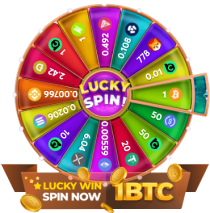
Cryptocurrencies, often called “crypto,” represent revolutionary digital money that operates independently of conventional financial institutions. By utilizing sophisticated cryptographic methods to secure transactions, cryptocurrencies like Bitcoin provide a decentralized alternative to government-issued currency. Here, we delve into the essence of what is cryptocurrency and what distinguishes, transforms, and enhances its appeal among both tech enthusiasts and the general population. Blockchain technology enables cryptocurrencies to be transparent and immutable. Essentially, a blockchain is a public ledger maintained across numerous computers connected in a peer-to-peer network.

Understanding Cryptocurrency
Often just known as what is crypto, cryptocurrencies are a kind of digital or virtual money based on security using cryptography. Unlike conventional currencies issued by governments (such as the rupee or dollar), cryptocurrencies run on blockchain—a distributed technology dispersed across many computers managing and documenting transactions. This decentralized nature allows for enhanced security and transparency, setting crypto apart from traditional financial systems.
Key Takeaways
Nature’s Decentralized Character: Unlike conventional currencies, cryptocurrencies usually are not under the control of any one central government or agency. Within the financial system, this decentralization provides a degree of independence and adaptability.
- ☑️ Using cryptographic methods guarantees that transactions are safe and that fresh unit generation is under control.
- ☑️ Blockchain technology drives cryptocurrencies as it makes transparent, safe transaction recording possible.
- ☑️ Accessibility: With an internet connection, cryptocurrencies may be accessible from anywhere in the globe, therefore offering a worldwide reach absent from certain conventional banking systems.
- ☑️ Volatility: Usually leading to notable changes over a short time, the value of cryptocurrencies may be somewhat erratic.
How Do Cryptocurrencies Work?
Blockchain technology drives cryptocurrencies’ operation, encapsulating the meaning of cryptocurrency. Every transaction is recorded in blocks, connected to create a chain. Since this digital ledger is replicated all throughout the network, it is not only distributed but also unchangeable. Cryptographic methods are used to safeguard transactions, thereby preserving the secrecy and integrity of asset transfer. This system ensures that each cryptocurrency transaction is secure and verifiable, reinforcing the foundational principles of this digital financial medium.
Types of Cryptocurrencies
Though most people know about Bitcoin, the original cryptocurrency, many others have different uses. One may classify them into many categories:
- The first cryptocurrency still most recognized and utilized nowadays is Bitcoin.
- Altcoins: Apart from Bitcoin, this group comprises all cryptocurrencies including Ethereum, which launched smart contracts capable of running automatically upon fulfilling criteria.
- Used in distributed apps (dApps), tokens—which are not actual money—are used for particular purposes on particular platforms, like as earning or service payment.
The Advantages of Using Cryptocurrency
| ⬇️ Advantage | 📝 Description |
|---|---|
Decentralization | Because of its blockchain technology, all users spread control and maintenance of the bitcoin network instead of concentrated in one company. |
Transaction Speed | Particularly for overseas payments, cryptocurrency may be speedier than conventional banks. |
Lower Fees | Cryptocurrency transactions often come with lower fees compared to traditional financial systems, particularly for high-value transactions. |
Privacy and Security | Privacy and Security Improved security using cryptographic techniques and the choice for more privacy than with conventional financial transactions. |
Accessibility | Anyone with an internet connection may use cryptocurrencies, which provide individuals without access to conventional banks a financial choice. |
What Can You Buy with Cryptocurrency?
Beyond simple financial tools, cryptocurrencies now serve as a legitimate method of payment for products and services. You might buy today with cryptocurrencies:
- Retail items, from online stores accepting cryptocurrency payments.
- Services include computer or web hosting.
- Real estate, from certain listings accessible via Bitcoin or other cryptocurrency.
- Luxuries include artwork, vehicles, and watches.
- Travel-related costs include flights and hotel reservations, especially via websites designed for bitcoin payments.
Is Cryptocurrency Legal?
Since various countries have adopted different tactics toward control and enforcement, the legality of what are cryptocurrencies is still a complicated and changing question everywhere. Here is a more thorough analysis of the legal situation with cryptocurrencies in several nations.
- India: Although they are legal there, the government approaches cryptocurrencies typically cautiously. Originally prohibiting banks from supporting crypto transactions in 2018, the Reserve Bank of India got this restriction reversed by the Supreme Court in 2020. Legal status nonetheless, regulatory ambiguity still exists and debates regarding stricter rules are still in progress.
- Bangladesh: Using Bitcoin is against the law there. The government has warned many times to its people about the dangers connected with digital currencies, and using cryptocurrencies may result in legal action.
- Brazil: The nation has a quite liberal attitude toward digital money and uses cryptocurrencies legally. The Brazilian government is striving to build a legislative framework that protects consumers while promoting technical development as it understands the usefulness of blockchain and crypto inventions.
- USA: For tax considerations, cryptocurrencies are legal and acknowledged as property in the United States. States may have different legal standing, however; some are more forward-looking in their acceptance and integration of companies connected to cryptocurrencies than others. Active work on developing clearer rules for cryptocurrency activities is being done by federal organizations like the Commodity Futures Trading Commission (CFTC) and the Securities and Exchange Commission (SEC).
As more countries start to acknowledge the possible advantages and hazards connected with crypto meaning, the legal scene surrounding them is always changing. For both individuals and companies wishing to interact with cryptocurrencies, understanding the specific laws and legal frameworks in their countries is very vital. For a thorough picture of how various nations regulate digital currencies, see our in-depth page on Cryptocurrency Regulations.













